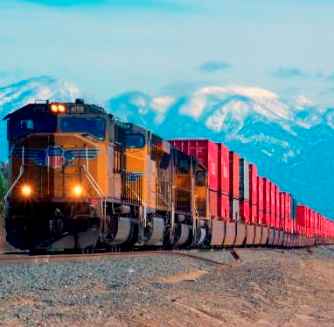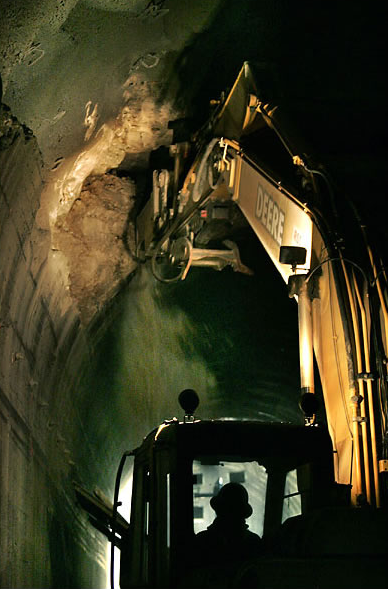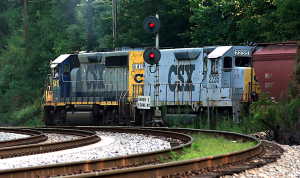AAR says Class I rails to spend $24.5 billion on 2013 network investments
 Courtesy Logistics Manager, by Jeff Berman, Group News Editor: Investments by Class I railroads are expected to be significant again in 2013, according to recently released data by the Association of American Railroads (AAR).
Courtesy Logistics Manager, by Jeff Berman, Group News Editor: Investments by Class I railroads are expected to be significant again in 2013, according to recently released data by the Association of American Railroads (AAR).
The AAR said that the seven North American-based Class I railroads plan to invest an estimated $24.5 billion in 2013 “to build, maintain and upgrade America’s rail network to ensure freight railroads can continue to deliver for the nation’s economy,” with $13 billion of that investment allocated towards projected capital expenditures to upgrade or enhance rail capacity.
The $13 million in capital expenditures would be about the same as 2012. In May 2011, the AAR released a report, entitled “Great Expectations 2011, Railroads and Continued U.S. Economic Recovery,” which stated that the seven Class I’s were planning to spend $12 billion in 2011 capital expenditures, following a $10.7 billion investment in 2010.
The AAR said that with hundreds of transportation projects underway, railroads are investing in things like intermodal terminals that facilitate truck to train transport, new track, bridges and tunnels, modernized safety equipment, new locomotives and rail cars.
And it added that in recent years railroads have spent about 17 percent on annual revenue on capital expenditures, whereas the average U.S. manufacturer spends about 3 percent.
 Examples of this spending at work include:
Examples of this spending at work include:
- the Heartland Corridor, a public-private partnership between NS and Virginia, West Virginia, Ohio, and the federal government to create the shortest, fastest route for double-stack containers moving between the Port of Virginia and the Midwest; and
- the National Gateway, a roughly $850 million public-private partnership (PPP) infrastructure initiative designed to provide a highly efficient freight transportation link between the Mid-Atlantic ports and the Midwest. Class I railroad CSX is a major stakeholder in this effort.
Publicly-stated 2013 investment allocations by Class I railroads include: CSX at $2.3 billion; Norfolk Southern at $2 billion; CN at $1.9 billion; CP at $1.1 billion; Union Pacific at $3.6 billion; and BNSF Railway at $4.1 million. Kansas City Southern told LM that their capital expenditures estimate for 2013 is 21 percent of revenue, which would come in around $4.6 billion based on its full year 2012 revenue of $2.2 billion.
The AAR has long stated that these capital expenditure investments are funded by private capital and not taxpayer funding, adding that the railroad industry owns, maintains, improves and pays taxes on their rights-of-way.
In an interview with LM, AAR President and CEO Ed Hamberger said that it is not entirely surprising that the cumulative capital expenditure figure of the Class I railroads continues to be so high on an annual basis.
“If it were another industry perhaps, but not when you consider it is the freight rail industry with long-term assets that must be continuously maintained and upgraded,” he said. “Our industry’s leaders and investors know that ‘deferred maintenance’ is not a winning strategy, so these vital capital expenditures and maintenance investments will continue, particularly given railroads are growing market share to move even more freight in the future.”
What’s more, the benefits of these investments to rail shippers are also evident, he said.
 These investments have benefitted rail customers in a number of ways, Hamberger explained, including significant advances in reliability and efficiency. He cited intermodal investments as one example in this area, where on-time windows for shipments have narrowed to meet the needs of trucking and logistics customers, coupled with the fact that railroads are reporting customer satisfaction has never been higher.
These investments have benefitted rail customers in a number of ways, Hamberger explained, including significant advances in reliability and efficiency. He cited intermodal investments as one example in this area, where on-time windows for shipments have narrowed to meet the needs of trucking and logistics customers, coupled with the fact that railroads are reporting customer satisfaction has never been higher.
When asked what the top benefits of this spending from the perspective of your Class I members, Hamberger said that these investments are essential to meeting not only the customer needs of today, but also the future needs of customers.
“Keep in mind, too, that many of these investments are made in coordination with customers—whether it involves custom facilities and track, special types of cars and equipment or investments that support improved means of loading and unloading shipments,” he explained.
And he added that these investments also directly go towards continuously improving safety and efficiency, as railroads are moving more, and doing it more safely than ever before. 2012 is on pace to be the safest year on record for the rail industry in a number of key areas, including train accidents, employee casualties and highway-rail accidents, he said.
While the Class I railroads continue to hit record-setting capital expenditure levels, some rail shippers and rail shipper groups continue to maintain that they are suffering from increased rates and decreased quality of service.
But railroad executives continue to counter that theory, explaining that the existing regulatory railroad environment has produced—for North American railroad shippers—a freight railroad system that is the best in the world. And if the railroad industry lost the ability to earn its cost of capital it could have a negative effect on capital investments to support traffic growth and reverse the strides made post-Staggers Act in the areas of rail safety and service reliability.
Any type of railroad industry re-regulation or shipper actions regarding rates or captive shipper-related situations through the Surface Transportation Board could have a detrimental effect on capital expenditure investments being sustained at current levels going forward.
“Anything that alters the current balanced rail economic regulatory system, which today supports the industry’s ability to sustain these vital investments,” is not welcome,” said Hamberger. “Today, railroads spend on average 40 cents of every dollar they earn back into the country’s nationwide rail network—so taxpayers don’t have to. However if the existing regulatory system is changed, those investments are very much in jeopardy.”
Category: General Update, Transit News










